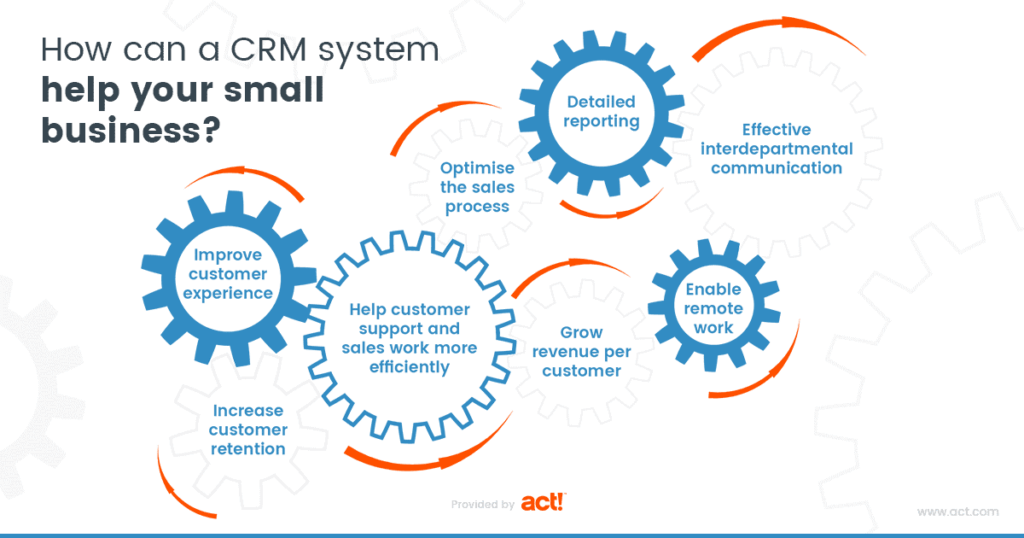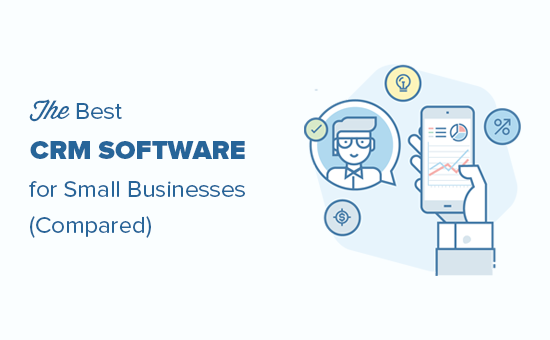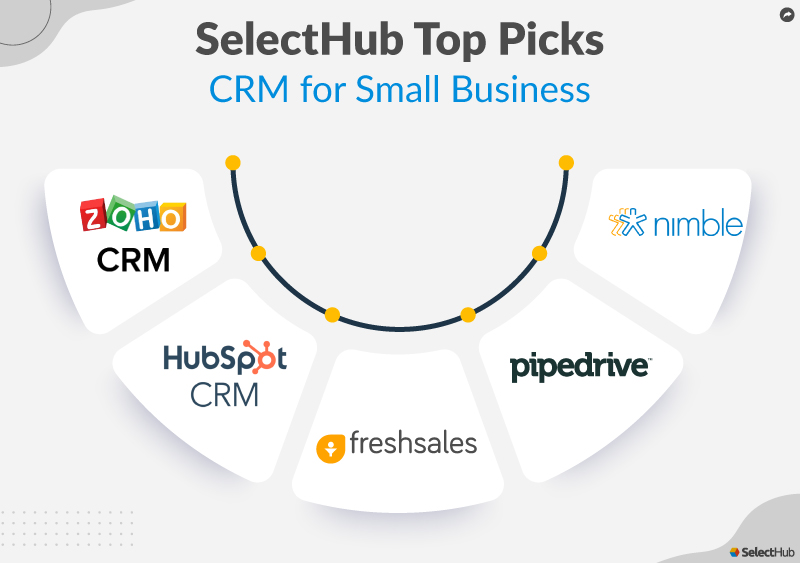
Introduction: Why CRM Matters for Your Small Retail Business
Running a small retail business is a whirlwind of activity. You’re juggling inventory, managing staff, handling customer inquiries, and trying to stay ahead of the competition. In this fast-paced environment, it’s easy for customer relationships to fall by the wayside. But what if there was a way to streamline all these interactions, personalize your customer experience, and ultimately, boost your sales? That’s where Customer Relationship Management (CRM) software comes in. This guide will walk you through everything you need to know about CRM for your small retail business, from the basics to the advanced strategies.
CRM isn’t just for the big players. In fact, for small retail businesses, a well-implemented CRM system can be a game-changer. It allows you to understand your customers better, anticipate their needs, and provide them with a more personalized experience. This, in turn, leads to increased customer loyalty, higher sales, and a stronger brand reputation. We’ll delve into the specific benefits, features, and implementation strategies to help you make the most of CRM.
What is CRM? Breaking Down the Basics
At its core, CRM is a system that helps you manage your interactions with current and potential customers. It’s not just about storing contact information; it’s about creating a comprehensive view of each customer, understanding their preferences, purchase history, and communication preferences. Think of it as a central hub for all customer-related information.
Here’s a simplified breakdown of what CRM typically encompasses:
- Contact Management: Storing and organizing customer contact details, including names, addresses, phone numbers, and email addresses.
- Interaction Tracking: Recording all interactions with customers, such as emails, phone calls, meetings, and social media interactions.
- Sales Automation: Automating sales processes, such as lead tracking, opportunity management, and quote generation.
- Marketing Automation: Automating marketing tasks, such as email campaigns, social media posting, and lead nurturing.
- Customer Service: Managing customer inquiries, complaints, and support requests.
- Reporting and Analytics: Providing insights into customer behavior, sales performance, and marketing effectiveness.
By integrating these components, CRM provides a holistic view of your customers, enabling you to make informed decisions, improve customer satisfaction, and drive business growth.
The Core Benefits of CRM for Small Retailers
Why should your small retail business invest in CRM? The benefits are numerous and can significantly impact your bottom line. Here are some of the most compelling reasons:
Enhanced Customer Relationships
CRM allows you to personalize your interactions with customers. By understanding their preferences and purchase history, you can tailor your communication, offer relevant products, and provide exceptional customer service. This leads to stronger relationships, increased loyalty, and repeat business. Imagine knowing a customer’s birthday and sending them a personalized discount. That’s the power of CRM!
Improved Sales and Revenue
CRM can streamline your sales process, allowing your team to focus on closing deals. By tracking leads, managing opportunities, and automating sales tasks, you can improve your sales efficiency and increase your revenue. CRM also helps you identify upselling and cross-selling opportunities, leading to higher average order values. For instance, if a customer frequently buys coffee beans, your CRM can suggest related products like coffee grinders or filters.
Increased Customer Loyalty and Retention
Happy customers are loyal customers. CRM helps you provide exceptional customer service, resolve issues quickly, and keep customers engaged. This leads to higher customer retention rates, which is crucial for long-term business success. It’s far more cost-effective to retain an existing customer than to acquire a new one. A CRM system can help you track and reward loyal customers, making them feel valued and appreciated.
Better Data Management and Organization
CRM centralizes all customer data in one place, making it easy to access and manage. This eliminates the need for spreadsheets and scattered files, ensuring that your team has the information they need when they need it. This organized approach leads to improved efficiency, reduced errors, and better decision-making. No more scrambling to find a customer’s contact information – it’s all at your fingertips.
Improved Marketing Effectiveness
CRM allows you to segment your customer base and target your marketing efforts more effectively. You can create personalized email campaigns, offer targeted promotions, and track the performance of your marketing activities. This leads to higher conversion rates and a better return on investment (ROI) for your marketing spend. For example, you can target customers who haven’t purchased in a while with a special offer to encourage them to come back.
Streamlined Communication
CRM can integrate with various communication channels, such as email, phone, and social media. This allows you to track all customer interactions in one place, ensuring that your team has a complete view of each customer’s history. This streamlined communication leads to faster response times, improved customer satisfaction, and a more efficient workflow. No more missed emails or forgotten follow-ups.
Key Features to Look for in a CRM System for Small Retail
Choosing the right CRM system is crucial for your business. Here are some key features to consider when evaluating different CRM options:
Contact Management
The ability to store and organize customer contact information is fundamental. Look for features like:
- Contact database: Easily store and access customer contact details.
- Segmentation: Group customers based on demographics, purchase history, and other criteria.
- Import/Export: Seamlessly import and export contact data.
- Duplicate detection: Prevent duplicate entries and keep your data clean.
Sales Automation
Sales automation features can significantly improve your sales efficiency. Look for features like:
- Lead tracking: Track leads through the sales pipeline.
- Opportunity management: Manage sales opportunities and track their progress.
- Quote generation: Create and send quotes quickly and easily.
- Sales reports: Generate reports to track sales performance and identify areas for improvement.
Marketing Automation
Marketing automation features can help you streamline your marketing efforts. Look for features like:
- Email marketing: Create and send targeted email campaigns.
- Segmentation: Segment your audience for more personalized messaging.
- Campaign tracking: Track the performance of your marketing campaigns.
- Social media integration: Integrate with social media platforms to manage your social presence.
Customer Service and Support
Excellent customer service is essential for customer satisfaction. Look for features like:
- Ticket management: Manage customer inquiries and support requests.
- Knowledge base: Create a knowledge base to provide customers with self-service support.
- Live chat: Offer live chat support on your website.
- Customer feedback: Collect and track customer feedback.
Reporting and Analytics
Data is your friend. Look for robust reporting and analytics features to gain insights into your business. Features to look for include:
- Sales reports: Track sales performance and identify trends.
- Marketing reports: Track the performance of your marketing campaigns.
- Customer behavior analysis: Analyze customer behavior to understand their preferences and needs.
- Customizable dashboards: Create custom dashboards to visualize key metrics.
Integration Capabilities
Choose a CRM that integrates seamlessly with your existing tools and systems. Consider integration with:
- E-commerce platforms: Integrate with your e-commerce platform to track online sales and customer data.
- Accounting software: Integrate with your accounting software to streamline your financial processes.
- Email marketing platforms: Integrate with your email marketing platform to automate your email campaigns.
- Social media platforms: Integrate with social media platforms to manage your social media presence.
Mobile Accessibility
Make sure your CRM is accessible on mobile devices so you can stay connected on the go. Look for:
- Mobile apps: Access your CRM data and features from your smartphone or tablet.
- Responsive design: Ensure that your CRM is responsive and adapts to different screen sizes.
Ease of Use
A CRM system should be user-friendly and easy to navigate. Look for:
- Intuitive interface: The system should be easy to learn and use.
- User-friendly dashboards: The dashboards should be easy to understand and provide key information at a glance.
- Training and support: Ensure that the vendor provides adequate training and support.
Implementing CRM in Your Small Retail Business: A Step-by-Step Guide
Implementing a CRM system is an investment, but it doesn’t have to be daunting. Follow these steps to ensure a smooth transition:
1. Define Your Goals and Objectives
Before you start, determine what you want to achieve with CRM. What are your specific goals? Do you want to increase sales, improve customer service, or streamline your marketing efforts? Defining your goals will help you choose the right CRM system and track your progress.
2. Assess Your Needs
Identify your current customer management processes and pain points. What are your biggest challenges? What features do you need in a CRM system to address these challenges? Consider the size of your business, your budget, and your technical capabilities when assessing your needs.
3. Research and Evaluate CRM Systems
Research different CRM systems and compare their features, pricing, and reviews. Consider factors such as ease of use, integration capabilities, and customer support. Take advantage of free trials to test out different systems and see which one best fits your needs. Some popular options for small retail businesses include:
- Zoho CRM: A versatile and affordable option with a wide range of features.
- HubSpot CRM: A free CRM with powerful features for small businesses.
- Salesforce Essentials: A scalable CRM for growing businesses.
- Pipedrive: A sales-focused CRM with a user-friendly interface.
- Freshsales: A sales CRM with built-in phone and email features.
4. Choose the Right CRM System
Based on your research and evaluation, choose the CRM system that best meets your needs and budget. Consider factors such as ease of use, features, pricing, and customer support. Make sure the system integrates with your existing tools and systems.
5. Plan Your Implementation
Develop a detailed implementation plan. This plan should include a timeline, a budget, and a list of tasks. Identify the key stakeholders involved in the implementation process and assign responsibilities. Consider the data migration process, training requirements, and ongoing support needs.
6. Migrate Your Data
Migrate your existing customer data to your new CRM system. This may involve importing data from spreadsheets, databases, or other systems. Ensure that your data is clean and accurate before migrating it to the new system. Test the data migration process to ensure that all data is transferred correctly.
7. Customize Your CRM System
Customize your CRM system to meet your specific needs. This may involve creating custom fields, setting up workflows, and configuring integrations. Configure the system to match your sales process, marketing efforts, and customer service practices.
8. Train Your Team
Provide training to your team on how to use the new CRM system. This training should cover all aspects of the system, including contact management, sales automation, marketing automation, and customer service. Provide ongoing training and support to ensure that your team is comfortable using the system.
9. Go Live and Monitor Performance
Once your team is trained, go live with your new CRM system. Monitor the performance of the system and make adjustments as needed. Track key metrics to measure the effectiveness of your CRM implementation, such as sales growth, customer retention, and customer satisfaction.
10. Continuously Improve
CRM implementation is an ongoing process. Continuously evaluate your CRM system and make improvements as needed. Gather feedback from your team and customers to identify areas for improvement. Stay up-to-date with the latest CRM features and best practices.
Best Practices for Using CRM in Your Small Retail Business
To maximize the benefits of CRM, follow these best practices:
Keep Your Data Clean and Accurate
Regularly review and update your customer data to ensure that it is accurate and up-to-date. This will help you avoid errors, improve communication, and personalize your interactions with customers. Implement data validation rules to prevent errors and inconsistencies.
Use CRM Consistently
Encourage your team to use the CRM system consistently. This will ensure that all customer interactions are tracked and that everyone has access to the information they need. Make CRM a part of your team’s daily workflow.
Personalize Your Customer Interactions
Use CRM to personalize your interactions with customers. Tailor your communication, offer relevant products, and provide exceptional customer service. Show your customers that you understand their needs and appreciate their business.
Automate Repetitive Tasks
Use CRM to automate repetitive tasks, such as email marketing and lead nurturing. This will free up your team’s time and allow them to focus on more important tasks. Automate tasks to improve efficiency and reduce errors.
Track Key Metrics
Track key metrics to measure the effectiveness of your CRM implementation. This will help you identify areas for improvement and track your progress. Track metrics such as sales growth, customer retention, and customer satisfaction.
Integrate CRM with Other Systems
Integrate your CRM system with your other systems, such as your e-commerce platform and accounting software. This will streamline your workflows and provide a more complete view of your business. Integration can save time and reduce errors.
Provide Regular Training
Provide regular training to your team on how to use the CRM system. This will ensure that they are comfortable using the system and that they are aware of the latest features and best practices. Continuous training is essential for maximizing the value of your CRM investment.
Common Mistakes to Avoid When Implementing CRM
Avoiding these common pitfalls can help ensure a successful CRM implementation:
Not Defining Clear Goals
Without clear goals, you won’t know what you’re trying to achieve with CRM. This can lead to wasted time and resources. Make sure you have a defined strategy.
Choosing the Wrong CRM System
Selecting a CRM system that doesn’t meet your needs can be a costly mistake. Research and evaluate different systems carefully before making a decision. Consider features, pricing, and integrations.
Not Involving Your Team
Failing to involve your team in the CRM implementation process can lead to resistance and lack of adoption. Involve your team in the planning, training, and implementation process. Get their feedback and address their concerns.
Not Migrating Data Properly
Poor data migration can result in inaccurate or incomplete data, which can undermine the effectiveness of your CRM system. Clean and validate your data before migrating it. Test the data migration process to ensure that all data is transferred correctly.
Not Training Your Team Adequately
Without proper training, your team won’t be able to use the CRM system effectively. Provide comprehensive training and ongoing support. Offer refresher courses and tutorials.
Not Using CRM Consistently
Inconsistent use of CRM can lead to a fragmented view of your customers and missed opportunities. Encourage your team to use the CRM system consistently. Make CRM a part of your team’s daily workflow.
Not Measuring Results
Without measuring results, you won’t know if your CRM implementation is successful. Track key metrics to measure the effectiveness of your CRM implementation. Analyze the data and make adjustments as needed.
The Future of CRM in Retail: Trends to Watch
The world of CRM is constantly evolving. Here are some trends to watch in the retail sector:
Artificial Intelligence (AI) and Machine Learning (ML)
AI and ML are being used to automate tasks, personalize customer experiences, and provide insights into customer behavior. AI-powered chatbots can provide 24/7 customer support, and ML algorithms can predict customer behavior and recommend products. Expect more AI-driven features in CRM systems.
Mobile CRM
Mobile CRM allows retailers to access customer data and manage their business on the go. Mobile CRM apps are becoming increasingly popular, providing retailers with the flexibility and convenience they need to stay connected with their customers. This trend will continue to grow as retailers seek to improve efficiency and responsiveness.
Omnichannel CRM
Omnichannel CRM provides a unified view of the customer across all channels, including online, in-store, and social media. This allows retailers to provide a seamless customer experience, regardless of how the customer interacts with their business. This is critical for retailers looking to provide a consistent brand experience.
Personalization
Personalization is becoming increasingly important in retail. CRM systems are being used to personalize customer interactions, offer relevant products, and provide exceptional customer service. Retailers are using data to understand their customers’ preferences and tailor their marketing efforts accordingly. Expect greater personalization to drive customer loyalty and sales.
Social CRM
Social CRM integrates social media data into the CRM system, allowing retailers to track customer interactions on social media platforms. This provides retailers with a more complete view of their customers and allows them to engage with their customers in real-time. This trend is crucial for retailers looking to build a strong social media presence.
Conclusion: Embracing CRM for Retail Success
Implementing CRM in your small retail business is an investment that can yield significant returns. By understanding your customers better, personalizing your interactions, and streamlining your processes, you can improve customer satisfaction, increase sales, and build a stronger brand. Start by defining your goals, assessing your needs, and choosing the right CRM system. Then, follow the best practices and avoid the common mistakes. With the right CRM strategy, your small retail business can thrive in today’s competitive market.
Don’t be afraid to start small and grow. Even implementing basic CRM features can make a huge difference. The key is to embrace the power of data and customer relationships to build a successful and sustainable retail business. The future of retail is customer-centric, and CRM is the key to unlocking that future.


